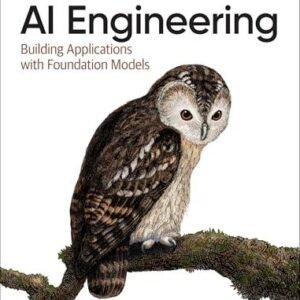In an era where artificial intelligence (AI) is heavily intertwined with our daily lives, from personalized recommendations on streaming platforms to advanced medical diagnostics, the implications of this technology extend far beyond its immediate applications. One of the most profound shifts occurring today is within the realm of computational theory—a foundational pillar of computer science that explores the limits of what can be computed. As AI techniques grow increasingly sophisticated, they are not only redefining traditional algorithms and problem-solving paradigms but also challenging long-held assumptions about computation itself. In this article, we delve into how AI is reshaping the landscape of computational theory, examining its impact on existing frameworks, the emergence of new methodologies, and the potential ethical implications that arise from these advancements. Join us as we explore the intersection of AI and theoretical computer science, and consider what the future may hold for this dynamic field.
Table of Contents
- The Evolution of Computational Theory in the Age of AI
- Key Innovations: How AI is Shaping Algorithms and Complexity
- Real-World Applications: AIs Role in Enhancing Problem-Solving Techniques
- Future Directions: Preparing for a New Era in Computational Research and Development
- Insights and Conclusions
The Evolution of Computational Theory in the Age of AI
The intersection of artificial intelligence and computational theory has catalyzed a paradigm shift in the way we understand algorithms and data structures. With the rise of machine learning and neural networks, traditional models have undergone a radical transformation. AI techniques enable systems to process information more intuitively, leading to the development of advanced algorithms that can learn from data rather than relying solely on predefined rules. This evolution has paved the way for new approaches in areas such as complexity theory, where data-driven insights challenge established parameters, creating a richer tapestry of computational possibilities.
As we delve deeper into this new era, it’s essential to recognize the implications for both theoretical and practical applications. Key areas of impact include:
- Machine Learning Frameworks: Enabling more efficient training and optimization.
- Quantum Computing: Redefining computational limits and performance.
- Algorithmic Fairness: Addressing biases in AI decision-making processes.
- Autonomous Systems: Accelerating advancements in robotics and self-learning technologies.
To comprehend the depth of this transformation, consider the following table that outlines the evolving roles of computational theory components in relation to AI advancements:
| Component | Pre-AI Role | Evolution with AI |
|---|---|---|
| Algorithms | Static problem-solving tools | Dynamic learning systems |
| Data Structures | Fixed layouts for information | Adaptive structures for real-time processing |
| Theory of Computation | Focus on decision problems | Incorporating probabilistic models |
Key Innovations: How AI is Shaping Algorithms and Complexity
Artificial Intelligence is leading a seismic shift in computational theory, particularly in how algorithms are developed and optimized. The integration of AI has introduced methodologies that not only enhance traditional algorithms but also create entirely new paradigms. Some of the most notable innovations include:
- Machine Learning-Enhanced Algorithms: AI systems can learn from data, making iterative improvements that refine algorithmic efficiency over time.
- Adaptive Complexity Reduction: AI helps identify and eliminate redundant steps in algorithm processes, pushing forward the boundaries of what’s computationally feasible.
- Real-Time Data Processing: Algorithms powered by AI can process vast amounts of data instantaneously, crucial for applications in finance, healthcare, and more.
The implications of these advancements are far-reaching. They not only promise increased speed and accuracy but also pave the way for innovative applications across multiple domains. A closer look at the advancements reveals a compelling table of performance gains derived from AI-enhanced methodologies:
| Algorithm Type | Standard Efficiency | AI-Enhanced Efficiency | Performance Improvement |
|---|---|---|---|
| Sorting | O(n log n) | O(n) | Up to 30% faster |
| Search | O(n) | O(log n) | Significant time saving |
| Graph Traversal | O(V + E) | O(E/2) | Reduction in resource use |
Real-World Applications: AIs Role in Enhancing Problem-Solving Techniques
Artificial Intelligence is playing a pivotal role in revolutionizing how we approach complex problem-solving across various domains. In fields such as healthcare, finance, and logistics, AI algorithms are streamlining decision-making processes and enhancing analytical capabilities. For instance, using machine learning models, healthcare providers can predict patient outcomes more accurately, allowing for timely interventions. In finance, algorithmic trading systems leverage AI to analyze market trends instantaneously, providing traders with real-time data and insights that were previously unattainable. This not only boosts individual performance but elevates the overall efficiency of the industry.
Moreover, AI’s contribution to optimization is noteworthy. Many industries are utilizing AI-driven predictive analytics to enhance operational efficiency. Companies can now assess vast amounts of data to uncover patterns and make informed decisions, ultimately leading to significant cost savings. Consider the logistics sector, where AI tools optimize delivery routes by analyzing traffic data, thereby reducing fuel consumption and delivery times. Additionally, collaborative AI systems that facilitate shared problem-solving among teams are emerging, fostering innovation and improving problem resolution strategies. This integration of AI into problem-solving techniques empowers professionals to tackle challenges more effectively and creatively.
Future Directions: Preparing for a New Era in Computational Research and Development
As we stand on the threshold of a new epoch in computational research, the integration of artificial intelligence is paving the way for innovations that redefine traditional paradigms. Machine learning and deep learning models are progressively enhancing computational theory by enabling faster data analysis and model creation that were previously unimaginable. Researchers are now able to leverage AI to solve complex problems, offering insights that push the boundaries of what we understand about computational limits. This shift not only enhances the efficiency of research tasks but also facilitates collaborative intelligence, where AI systems and human experts work synergistically, yielding superior outcomes in diverse fields such as quantum computing, complex systems, and algorithm design.
Moreover, the emergence of cloud-based AI platforms is democratizing access to advanced computational tools, allowing teams from various backgrounds to engage in cutting-edge research without the need for substantial upfront investments in hardware. This accessibility is fostering a global community of innovators who are collectively exploring uncharted territories in computational theory. The future is also likely to witness an increase in multidisciplinary approaches, where experts from fields such as neuroscience, mathematics, and computer science collaborate, leading to breakthroughs that will reshape our understanding of intelligence itself. Continued investment and focus on ethical AI practices will ultimately propel this transformation, ensuring that development is not just rapid, but responsible.
Insights and Conclusions
As we stand at the crossroads of artificial intelligence and computational theory, it’s clear that the implications of this unprecedented transformation are profound. AI is not just a tool; it’s reshaping the very frameworks through which we understand computation itself. From enhancing problem-solving capabilities to driving innovative technologies that challenge traditional paradigms, the influence of AI is set to redefine the boundaries of what’s possible.
Looking ahead, researchers and practitioners must continue to engage with these changes, leveraging AI to tackle complex theoretical challenges while also ensuring ethical considerations remain at the forefront of development. As we delve deeper into this exciting frontier, the synergy between AI and computational theory promises to unlock new paths for exploration and discovery, paving the way toward a future rich in possibilities.
the evolution of computational theory in the age of AI represents not just a shift in technology, but a pivotal moment in our intellectual landscape. It invites us to rethink established norms, embrace innovation, and collaborate across disciplines. As we continue to witness this transformation unfold, one thing is certain: the journey has only just begun, and the best is yet to come. Thank you for joining us in exploring these dynamic changes—stay tuned for more insights as we navigate this fascinating intersection of technology and theory together.





